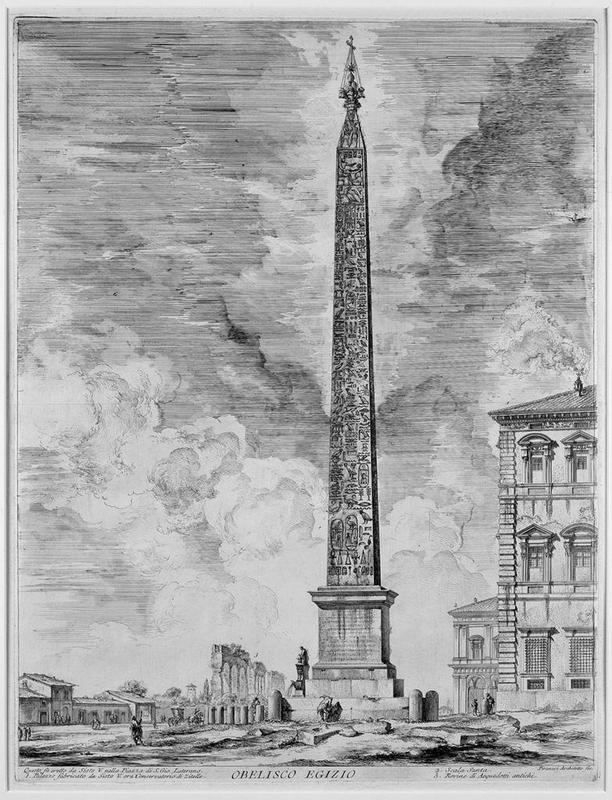Piranesi's Obelisco Egizio
Piranesi’s Obelisco Egizio, from the series Vedute di Roma, depicts the “Lateran obelisk,” the largest standing obelisk in the world, first constructed during the reign of Tuthmoses III (1504-1450 BCE), and erected in the temple complex at Karnak during the reign of his grandson, Tuthmoses IV.
The obelisk was ordered to be delivered to Constantinople under emperor Constantine (274-337 CE), however the task was never accomplished, and the obelisk was eventually delivered to Rome under Constantius II (r. 337-361 CE), Constantine’s son and successor.1
The Obelisk was raised in the middle of the spina of the Circus Maximus, next to the Flaminian Obelisk, a monument erected by emperor Augustus in 10 CE.2
Over the centuries, the obelisk fell, fragmented into three pieces, and was buried by debris and rising ground levels. It was eventually excavated and repaired under Pope Sixtus V (1521-2590) and placed in its current location, the Piazza del Popolo.
In the etching, Piranesi depicts the grandeur of this massive structure. It is placed directly at the center of the composition, towering over neighboring buildings and miniscule figures. Sunlight illuminates the obelisk’s face, further emphasizing the detail given to each carved hieroglyph, and its stone surface and sharp angles place it in contrast to the light, billowing clouds in the background. The size of the obelisk is further emphasized by the extension and lighting of further homes and buildings in the leftmost side of the print.
While the Obelisco is certainly the focus of this etching, Piranesi maintains his practice of annotating his work, assigning numbers and captions to three surrounding structures. The representation of contemporary buildings and active figures allows the obelisk to be presented in context of Piranesi’s modern Rome.
______________________________________________________________________________
1. Claridge, Amanda. Rome. 2nd ed. Oxford: Oxford University Press, 2010. 300.
2. Sorek, Susan. The Emperor’s Needles: Egyptian Obelisks and Rome. Bristol: Bristol Phoenix Pr, United Kingdom, 2009.
